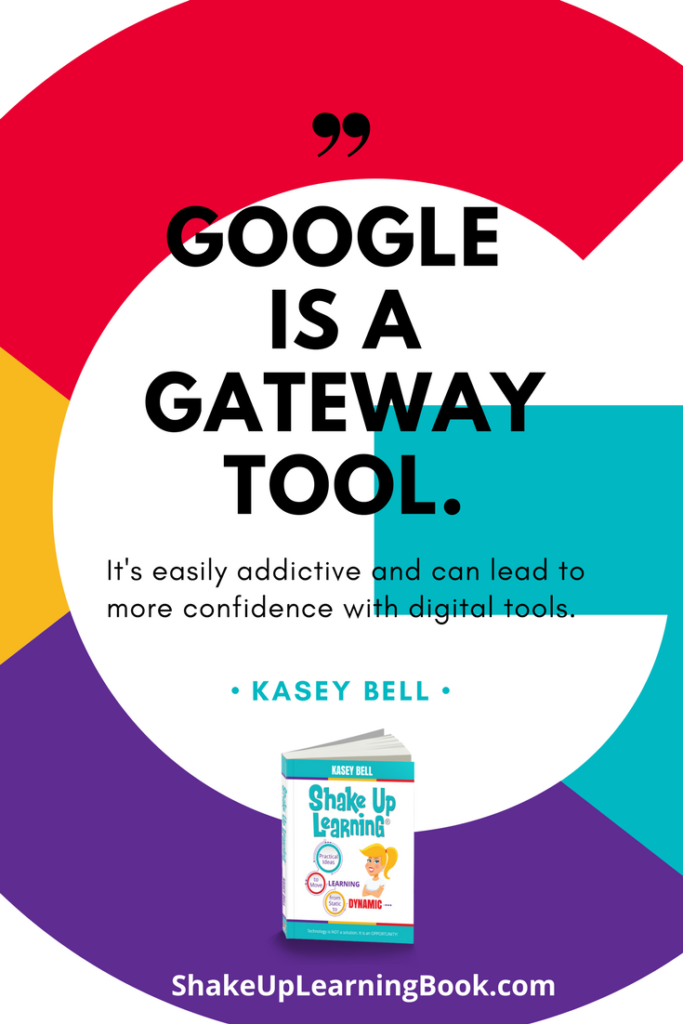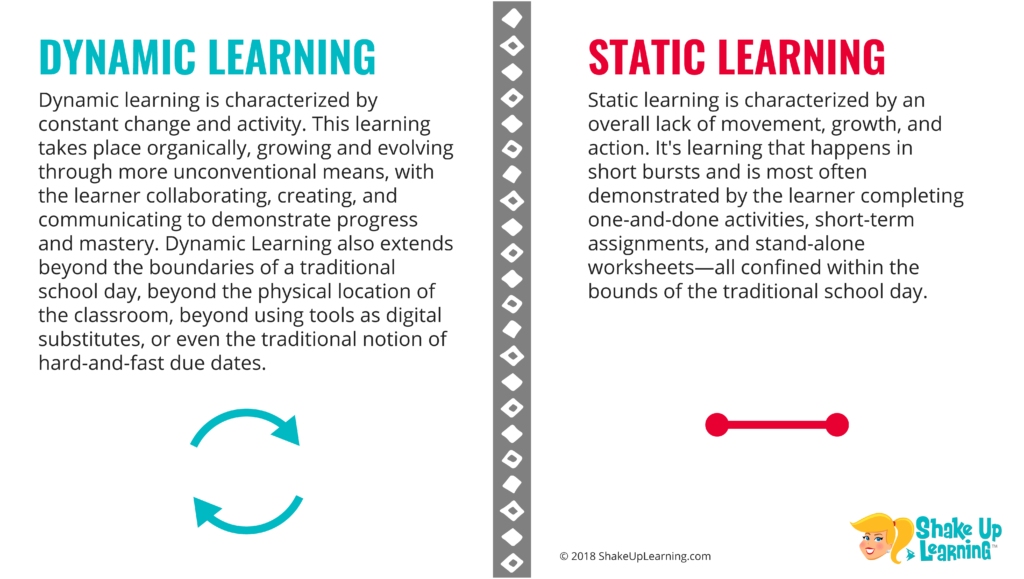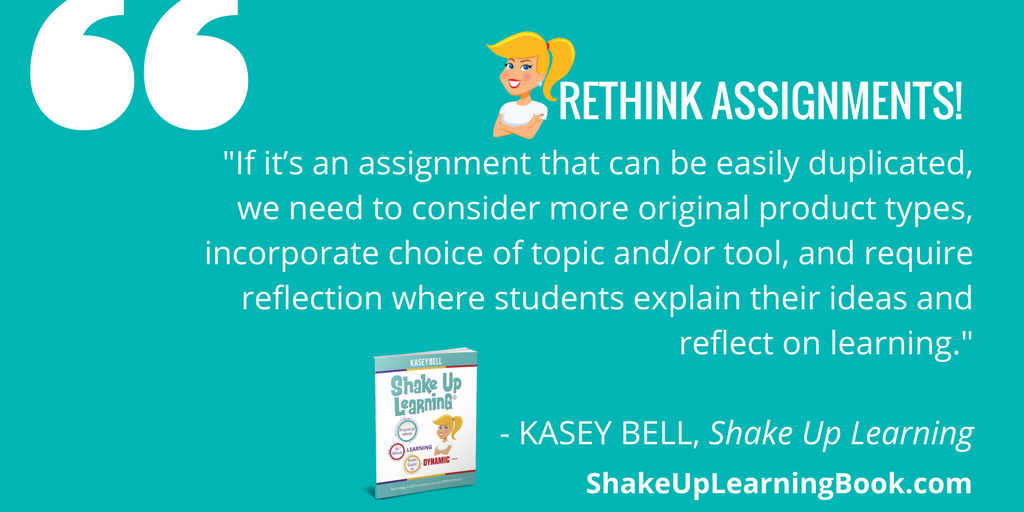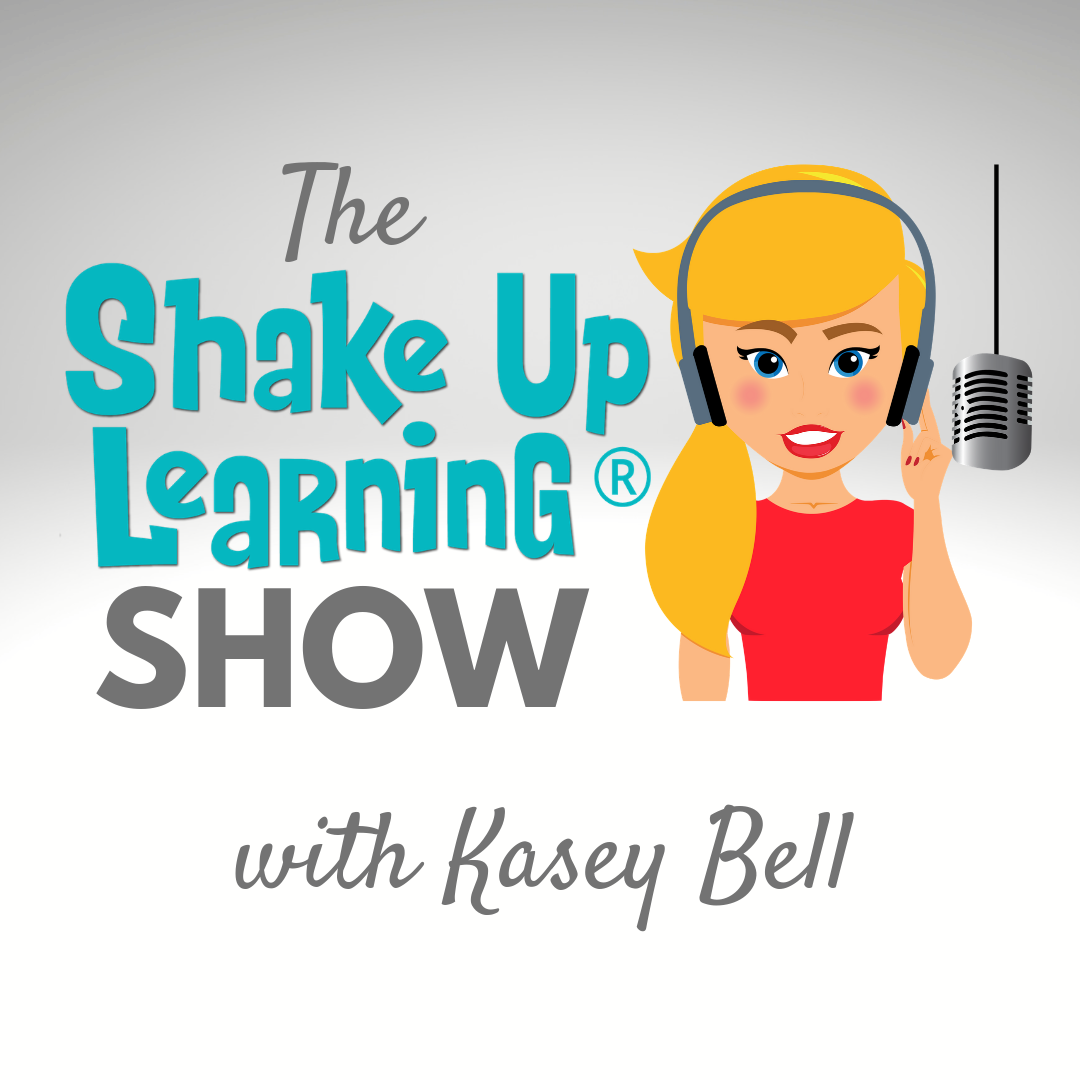I said it. Google is a Gateway Tool!
For a lot of teachers who are reluctant to try integrating technology or using devices, Google is simply a stepping stone, like a gateway tool if you will. It’s easily addictive and can lead to more confidence with digital tools. But that’s all it takes–simply a taste of what the wonderful twenty-first century has to offer and you can see the light turn on.

The truth is that there are hundreds of amazing digital tools that can help teachers design dynamic learning experiences for students.
But you have to admit, Google did change the game. Digital tools, like G Suite, that are available 24/7 and give us easy access to communicate, collaborate, create, and demonstrate thinking and learning (Was the the 4 C’s? I think it was!) have shown us how to move past using digital tools as substitutes for pen, paper, textbooks, and worksheets.
[Tweet “”Google is like a gateway tool for Teachers. It’s easily addictive and can lead to more confidence with digital tools.” – Kasey Bell”]
An Opportunity for Dynamic Learning
Don’t misunderstand me. Technology is not a panacea to our educational woes, but it has opened the doors for a new kind of learning. If guided with purpose toward the learning goals, we can use all of the tools at our disposal (technical or not) to maximize learning in our classrooms and help prepare students for an ever-changing postmodern world.
There are no silver bullets, no magic formulas, no acronyms that work for every teacher in every classroom. Teaching is much more of an art form. A one-size-fits-all education doesn’t work for today’s world. We have to push the boundaries of what we thought was possible and let go of static, one-and-done, activities and assignments.
But what technology can offer is an opportunity–an opportunity often missed time and time again. Technology gives us new ways to communicate, collaborate, personalize, adapt, differentiate, and share our thinking, and it has opened the door for Dynamic Learning!
[Tweet “”Technology is NOT a Solution. It is an Opportunity!” – Kasey Bell”]
Dynamic Learning is simply a way to think differently about learning, a way to help us plan and implement meaningful learning experiences for our students. Every lesson will not bring about innovation. Every lesson will not magically integrate every standard and all of the four c’s. But the Dynamic Learning Framework can help us to see the bigger picture, to find balance, and give our classroom metabolism a boost!
What is Dynamic Learning?
Dynamic learning is characterized by constant change and activity. This learning takes place organically, growing and evolving through more unconventional means, with the learner collaborating, creating, and communicating to demonstrate progress and mastery. Dynamic Learning also extends beyond the boundaries of a traditional school day, beyond the physical location of the classroom, beyond using tools as digital substitutes, or even the traditional notion of hard-and-fast due dates.
Dynamic Learning Tools?
Nope! If you were hoping for some pretty infographic with a list of tools that are going to magically turn your lessons into dynamic lessons, you missed the point.
You will never see me publish an infographic of dynamic learning tools. A digital tool is not inherently dynamic. It is the student’s use of tools and the ways it’s used to create and demonstrate learning that is dynamic. Dynamic learning might include the use of digital tools, or it might not. Technology is not a requirement for dynamic learning, but it can make dynamic learning possible.
[Tweet “”A digital tool is not inherently dynamic. It is the student’s use of tools and the ways it’s used to create and demonstrate learning that is dynamic.” – Kasey Bell”]
Rethinking Assignments – To PDF or Not to PDF
A common question I receive is about how to upload PDFs to the cloud and annotate or fill them out digitally. Now, I want you to contemplate this carefully. There is always a little gray area, so I try not to immediately assume what the end goal might be. I always follow up with questions of my own to see what type of PDF document they want to use with students.
More often than not, teachers want to convert their worksheets to digital worksheets, which is not dynamic at all. This is using new tools to do old things. It’s like using twentieth-century logic in twenty-first-century situations. Again, there’s a bit of a mindset shift that must take place as you begin to think more dynamically. There may be valuable questions on that PDF, but is it worth giving up the ability to collaborate and create? Can you still integrate any of the Four Cs— critical thinking, communication, collaboration, and/or creativity?
We must think differently about the assignments. As I said, there is always some gray area. I’m sure someone reading this is getting upset about now. That’s okay. There are always exceptions. As a reading teacher, I know marking up text is an important skill and even a required skill for some assessments. I’m not saying all PDFs are bad. I just want you to ask yourself a few questions before you decide:
- What is the end goal?
- What are the learning targets?
- Is this the ONLY approach to teaching this skill or content?
- Are there any ways to integrate the Four Cs?
Rethinking Assignments – Don’t Blame the Tools.
I received a question from a teacher on social media that really illustrated to me the purpose in rethinking assignments. To protect the innocent, I will summarize the question:
“In the past, I’ve had students create Google Slides presentations and share them with me for a project. This week I assigned the same project and have several students who are showing signs they are probably copying work from former students. How can we prevent this from happening?”
The first few answers from followers were revealing. Everyone was focused on the cheating. Cheating was the culprit, the problem. Someone even suggested the teacher stop using tools like Google Slides, where it’s so easy to share and copy and paste.
They were focused on the wrong issue. Yes, cheating can be a problem, but the problem here was the assignment. The teacher was taking an old assignment, used year after year, something that originated in PowerPoint and blaming students for copied responses.
My response was to think differently about the assignment because it was as flat as West Texas.
If it’s something that can be easily duplicated, we need to consider more original product types, incorporate choice of topic and/or tool, and require reflection where they explain their ideas and reflect on learning.
[Tweet “”If it’s something that can be easily duplicated, we need to consider more original product types, incorporate choice of topic and/or tool, and require reflection where they explain their ideas and reflect on learning.” – Kasey Bell”]
Now, if you are reading this and shaking your head yes in agreement, you are a member of the choir. You get it. Unfortunately, many teachers have no idea that learning has changed or that they can stop delivering lectures and packets every day. Are you doing your part to reach the educators who don’t get it?
Want to learn more idea like this? You will love my new book!
Shake Up Learning by Kasey Bell
Check out my new book, Shake Up Learning: Practical Ideas to Move Learning From Static to Dynamic.
About the Shake Up Learning Book
Technology is not a magic solution for education. It is an opportunity! An opportunity to shake things up, to connect and grow, and to create dynamic learning experiences for our students!
In this three-part book, you will explore WHY it’s time to Shake Up Learning, WHAT changes we can make in our classrooms to support dynamic learning experiences, and HOW to plan meaningful lessons for your classroom.
Shake Up Learning is a powerful guide and planning tool to help educators at all grade levels make the most of technology. Educator and blogger Kasey Bell guides you through the process of using technology and proven techniques to make learning dynamic.
You’ll discover . . .
- Practical strategies to help move from static teaching to dynamic learning
- Straightforward and easy-to-use templates for crafting engaging learning opportunities
- Tips and tricks for fearless implementation of powerful lesson plans
- Advice for moving from one-and-done activities to learning that evolves and inspires throughout the school year—and beyond!
Be DYNAMIC and SHAKE UP LEARNING in Your Classroom This Year!
But wait…There’s more!
With this book, I have also created several interactive resources, templates, and downloads, all available on ShakeUpLearningBook.com.
- Get the FREE Shake Up Learning Quickstart Guide
- An online community
- Discussion Questions, Chapter Actions, and Embedded Resources for all 20 Chapters!
- An interactive companion website to help you continue and deepen the learning
- A lesson plan database (submit and search for dynamic lesson plans)
- Tons of free resources, videos, templates, and downloads, all available on the website: ShakeUpLearningBook.com.
[convertkit form=5108777]
© Shake Up Learning 2025. Unauthorized use and/or duplication of this material without express and written permission from this blog’s author and/or owner is strictly prohibited. Excerpts and links may be used, provided that full and clear credit is given to Kasey Bell and Shake Up Learning with appropriate and specific direction to the original content on ShakeUpLearning.com. See: Copyright Policy.



